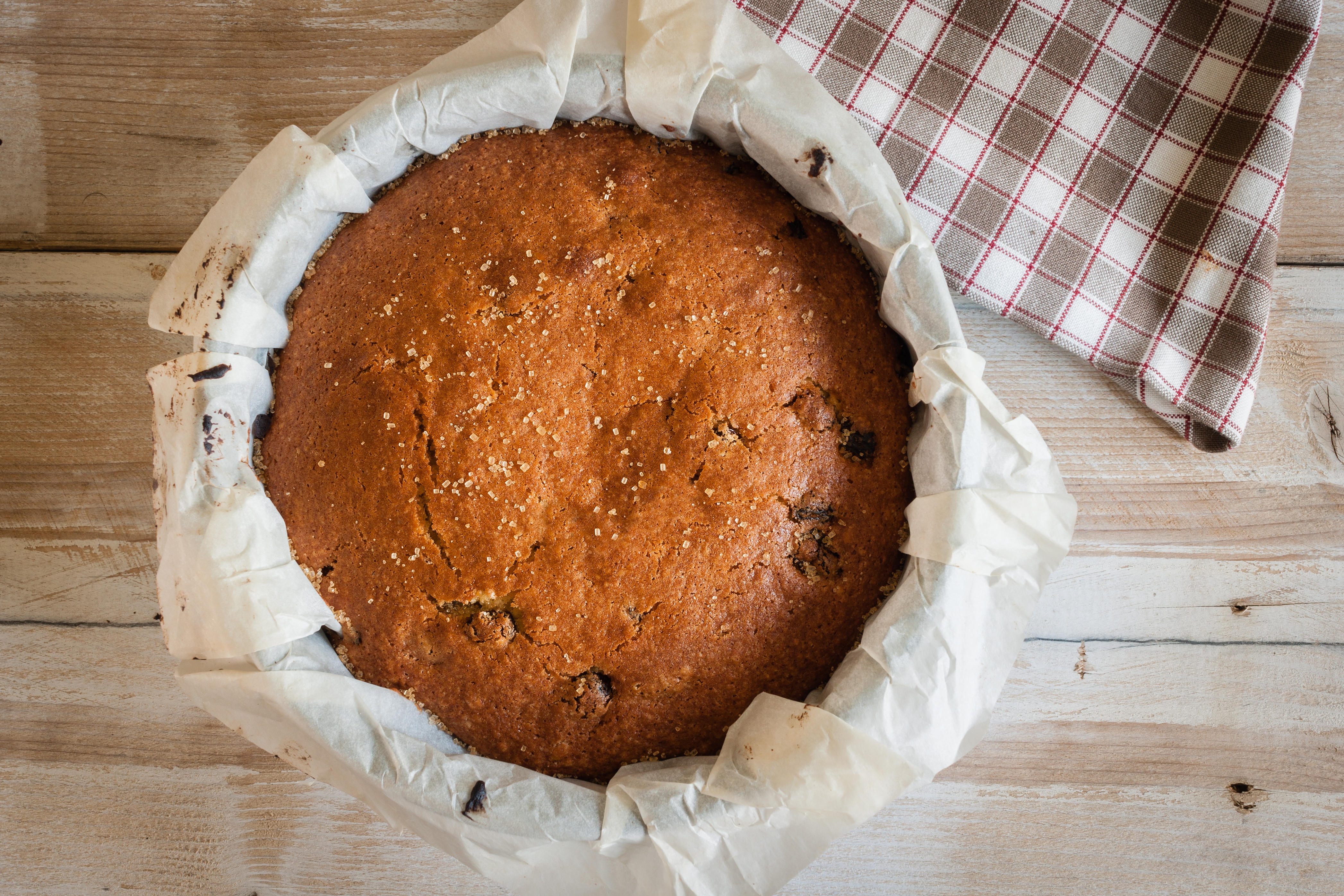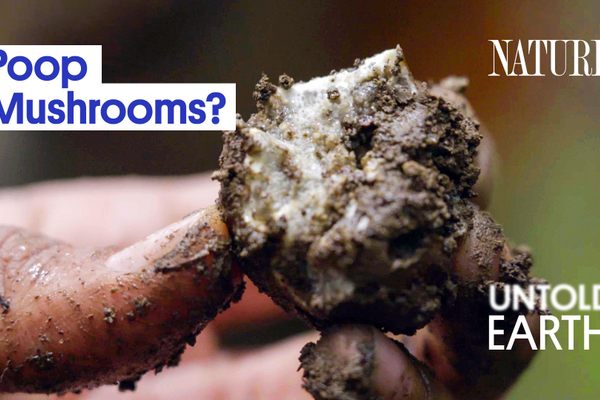

Gastro Obscura’s Favorite Recipes of 2023
Feast on real-life zombie fungus and tiger tail ice cream.
In 2023, Gastro Obscura shared dozens of recipes for unusual foods and dishes born out of unlikely circumstances. The recipes that stuck with our editors range from the mystical—a snacking cake that may help the baker recover lost objects—to the nostalgic—a scoop of striped tiger tail ice cream. All of them show that, whether in the middle of Cold War hysteria or amidst the decadence of 1920’s Tijuana, humans like to eat well.
Eat Like an Ancient Greek Philosopher
By Andrew Coletti
Deipnosophistae, written by Athenaeus in the 3rd century, is half food writing and half conversational cheat codes for sounding smart at a dinner party. This “banquet of texts” is packed with the wisdom of the age, not to mention some of the earliest recorded recipes. Curiously, this particular recipe for grilled mackerel includes hard, salty cheese—a combination that later Greek gastronomic authority Archestratus considered an abomination.
The Original Caesar Salad Was Finger Food
By April White
“Perhaps only this moment of determined decadence could have created the Caesar salad,” writes April White of the now-ubiquitous dish born in Tijuana during the rough-and-tumble times of Prohibition. At the time, Tijuana was a boomtown, thanks to its readily flowing liquor. Yet while we know roughly where and when the Caesar was born, the true inventor still remains a mystery. Not only that, but the early Caesar salad looked quite different from present-day iterations.

How to Cook a Delicious Meal With Zombie Fungus
By Natalie Zarrelli
In a year when many of us were frantically googling “could Cordyceps really lead to a zombie apocalypse,” Natalie Zarrelli was not only facing her fears, but actually eating them. Unlike in The Last of Us franchise, the 750 identified real-life species of this parasitic fungus are definitely worth eating. As mycologist Priscila Chaverri notes, “for Cordyceps to mutate, evolve, and start killing massive amounts of humans could probably take many millions of years.” In the meantime, sautéing these mushrooms with miso and tossing them with ramen noodles sounds delicious.
Welsh Sheep-Shearing Cake Is a Forgotten Pastoral Pleasure
By Jamie Ellis
For sheer bucolic charm, it’s hard to think of anything lovelier than a piping hot cup of tea with a buttery sponge cake after a long day of sheep-shearing. Cacen gneifo (pronounced “c-ack-en guh-nigh-fo”), fragrant with citrus and caraway, is a cozy treat. Recipes for the cake first appeared in print around the 1850s, but were passed down orally for far longer.

Remembering When Cocktails Were Just Soup
By Diana Hubbell
In 1955, the swankiest lifestyle magazine editors and radio broadcasters around the United States received an unusual gift basket containing an ice bucket, a set of tongs, and a can of Campbell’s beef bouillon. The hope was that they’d promote Campbell’s low-calorie “cocktail” alternative: Soup on the rocks. Consisting of nothing more than broth and ice, with perhaps a twist of lemon or Worcestershire sauce, this marketing ploy persisted for decades. You can make it for yourself (the recipe is exactly what you’d expect) or try a more contemporary soup-inspired libation.

Make Tiger Tail Ice Cream With Gastro Obscura
By Andrew Coletti
Ontario’s iconic orange-and-black-striped frozen treat was the star of Canadian ice cream parlors from the 1950s to the 1970s. It’s still available in its home region, but Editorial Fellow Andrew Coletti lives far away in NYC—so he decided to create his own version. After considerable research and careful trial-and-error, he came up with this licorice-laced homemade edition. The original formula from the ‘50s may remain a secret, but we can attest that this recipe is delicious.
Chowder Once Had No Milk, No Potatoes—and No Clams
By Anne Ewbank
As hard as it might be to picture, the earliest iteration of chowder looked nothing like modern-day New England versions served with oyster crackers. “No milk. No potatoes. Even clams didn’t make it into the mix,” writes Associate Editor Anne Ewbank. The first known version appears in the form of a poem in a 1751 edition of the Boston Evening Post. We bravely recreated this murky, red wine-stained mess, loaded with hardtack, in the name of journalism.
Make This Fallout Shelter–Friendly 1960s Ham Spread
By Andrew Coletti
In 1961, with the Cold War in full swing and the prospect of nuclear conflict all too real, food editor Marie Adams wrote a recipe column entitled “Can You Make an Appetizing Meal in Your Cellar?” In the end, Americans never had to move into fallout shelters, but Editorial Fellow Andrew Coletti still set out to find out just how appetizing these meals were. While this spread made with canned deviled ham may not win any beauty awards, it would have been a perfectly palatable post-apocalyptic snack.

Lost Something? Make This Greek Saint’s Cake
By Rossi Anastopoulo
When you lose anything, from the family dog to a wedding ring, one move is to pray to Saint Agios Fanourios. Should your lost item return to you, express your gratitude in the Greek Orthodox tradition by baking this vegan—or “Lenten”—snacking cake. Whether or not you believe the superstition (author Rossi Anastopoulo swears by it) fanouropita makes for a tasty treat to have around the house.
Make 19th-Century ‘Neapolitan Pizza’ for Dessert
By Andrew Coletti
Italian food consistently ranks as one of the world’s most popular cuisines, yet without the works of 19th-century writer Pellegrino Artusi, that very concept might not exist. In his 1891 La Scienza in cucina e l’arte di mangiar bene, the author attempted to codify the gastronomy of a newly unified nation. Yet despite his desire to create a truly national cuisine, Artusi’s northern Italian bias shows in many of his recipes. Having spent much of his life in Florence, he had little firsthand experience with cheese-topped Neapolitan pies. Instead, he published a recipe for a sweet, custard-filled “Pizza alla Napoletana.”
Gastro Obscura covers the world’s most wondrous food and drink.
Sign up for our email, delivered twice a week.




















Follow us on Twitter to get the latest on the world's hidden wonders.
Like us on Facebook to get the latest on the world's hidden wonders.
Follow us on Twitter Like us on Facebook